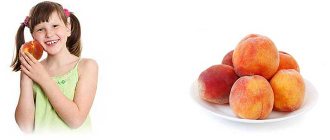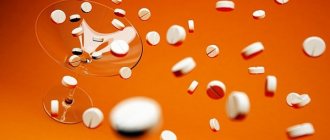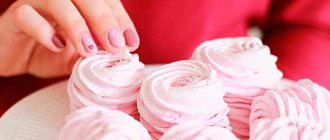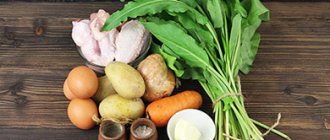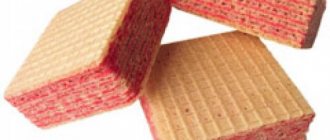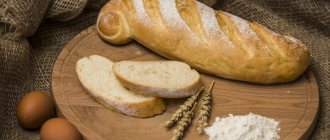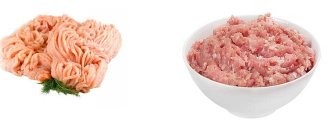History of origin
Kissels are one of the very ancient Russian dishes. Their history goes back more than 1000 years. People in ancient times fermented (soured) oat milk to prepare this delicious dish. This is where the name of the drink came from. By the way, back then it was practically not used in liquid form. The hot product was consumed with hemp oil, and the frozen product was cut into pieces and eaten, preferably with milk or jam. Around the 17th century, so-called kiselniki began to appear in Rus', which produced this drink in large quantities and then sold it on the streets and bazaars. They usually settled in one area, called Kiselnaya Sloboda. From which the names of modern streets in Moscow subsequently came.
This kind of jelly, as we know it today, appeared in Russia already in the 19th century. Just then, cheap potato starch came into widespread use. Sweet, fruit and berry drinks were easy to make and required much less production time than the original ones. Therefore, gradually they practically replaced grain crops.
Sour grain products are firmly established in Russian fairy tales and national folklore. Everyone, of course, remembers the famous milk river with its jelly banks. And another story about jelly, which saved the city, is mentioned in the ancient chronicle “The Tale of Bygone Years.”
Traditional grain products were considered a mandatory dish at funerals. And at weddings, serving it to guests, they hinted that it was time to go home.
Today, sour jelly is made from flour or grain flakes, and fruit and berry jelly is made from starch. There are also ready-made powdered or packaged concentrates in briquettes.
Types of jelly, calorie content and nutritional value
According to the composition of the ingredients they contain, jelly is divided into grain (oatmeal, barley, rye, wheat, pea and others), fruit and berry and dairy. They can also be cooked from ready-made berry syrups or from dry concentrate. Typically, dairy drinks are prepared with corn starch, while fruit and berry drinks are prepared with potato starch. Oatmeal, wheat and rye jelly are served on sourdough or sourdough.
The calorie content of jelly, as well as its nutritional value, largely depend on the product from which it is made.
The tables show that dairy drinks are much higher in calories than others. They also contain a predominant content of proteins and fats, due to the inclusion of milk in their composition. It can also be noted that the calorie content of dairy products may vary depending on the milk with which it is prepared. Table No. 1. Calorie content of different types per 100 grams of product
| Types of jelly | Calories, kcal |
| Berry | 79,0 |
| Currant | 60,0 |
| Cranberry | 53,0 |
| Cherry | 51,0 |
| Lactic | 100,0 |
| Dry concentrate | 357,0 |
Table No. 2. Nutritional value of different types per 100 grams of product
| Types of jelly | Squirrels | Fats | Carbohydrates |
| Berry | – | – | 20,0 |
| Currant | – | – | 15,0 |
| Cranberry | – | – | 13,0 |
| Cherry | – | – | 11,0 |
| Lactic | 2,8 | 3,2 | 15,0 |
| Dry concentrate | – | – | 87,0 |
Kissel, calorie content and dietary properties. What are the benefits of jelly for the body?
Kissel is an ancient dish of ancient Rus', a wonderful non-alcoholic drink, tasty and sweet. No matter how long ago it was invented, representatives of the Slavic peoples still love and appreciate jelly.
Maybe that’s why the questions are so relevant - what is the calorie content of jelly, and what are the benefits of jelly.
And what is more important – the number of calories in it, or the beneficial properties? We will try to answer this and other questions in our article.
The main thing that modern consumers of jelly should know is to prepare jelly based on potato starch and using various fruits or berries.
Preparing jelly is greatly simplified if you use fruit and berry syrups and juices instead of berries and fruits. But the easiest way to prepare jelly is from dry jelly concentrate produced by the food industry.
The composition of dry jelly includes fruit or berry extract, sugar, potato flour and citric acid.
Dry jelly is diluted with cold water (1 cup per 100 g of jelly), poured into boiling water (1 1/2 cups), stirred well, brought to a boil and cooled.
By taking a larger or smaller amount of potato flour, you can get jelly from berries and fruits of varying thickness. Typically, medium thick jelly is prepared. For 4 glasses of this jelly, it is enough to take 2 tbsp. spoons of potato flour. If the amount of potato flour is increased to 3 tbsp. spoons into 4 cups, you can get a thick jelly.
When preparing jelly, potato flour is diluted in chilled boiled water (1 glass of water for 2 tablespoons of flour). You need to dilute the flour while the syrup is boiling, since if you dilute it in advance, it will settle to the bottom.
The diluted potato flour must be strained through a sieve and poured into the hot syrup immediately, not in parts, and stir quickly. You should not boil for a long time, as the jelly becomes liquid.
Kissels are served cold; Medium thick jelly can also be served hot. Thick jelly should be poured into molds and cooled well.
First, the mold is moistened inside with cold water, then the cooled jelly will easily separate from it.
To prevent a film from forming on the surface of the jelly, you need to sprinkle it with a thin layer of granulated sugar. You can serve the jelly with sugar, cold milk or cream.
Although this is a sweet drink, the calorie content of jelly is not too high. Thanks to this, it is recommended for use by everyone, including even small children. There are many different varieties of jelly. They are prepared from berries, fruits, syrup, milk, and fresh juices. Any jelly contains starch, which helps satisfy the feeling of hunger.
Well, we couldn’t even talk about the harm of jelly. One can only note the high calorie content of milk jelly, but it can be replaced with berry jelly - it is also very tasty.
Jelly has many beneficial properties - it prevents and heals a number of ailments, for example, the disease of our century - intestinal dysbiosis. Even ladies who zealously monitor their body weight can use jelly. Its caloric content allows this.
It is also useful for people susceptible to increased acidity of gastric juice. Separately, it is worth mentioning the benefits of jelly in the spring, when we are in dire need of vitamins.
Kissel will perfectly help with thirst, especially if after cooking you put it in the refrigerator.
Kissel is a very nutritious, high-calorie dish due to the starch content in it; it retains many vitamins. Kissel has an alkalizing effect on the body, which is very important for people suffering from high acidity or gastritis and peptic ulcers of the stomach and duodenum.
Kissel, prepared from high-quality berries or juices, firmly holds first place among other drinks in terms of the amount of organic acids; moreover, it has healing qualities, which largely depend on what fruits the jelly is made from:
- Blueberries in jelly are effective for diseases of the gastrointestinal tract, infectious diseases, as well as for improving visual acuity
- Apple jelly is recommended for the prevention of anemia, hypovitaminosis and to improve digestion. It is also used as a dietary remedy.
- Rowan jelly is useful for diseases of the liver and gall bladder, has a mild laxative, choleretic and diuretic effect.
- Cherry jelly has antiseptic properties and is a good remedy for inflammatory diseases of the respiratory tract.
- Cranberry jelly is the best drink for colds and flu, thanks to the content of ascorbic and acetylsalicylic acids.
- Oatmeal jelly, traditionally called “Russian balsam,” can be beneficial for stomach diseases and also as a vitamin supplement.
How many calories are in jelly?
Kissel is a drink with a viscous consistency, and its taste depends on the filler. For example, cranberry jelly will be a little sour, and strawberry jelly will be sweet.
It goes without saying that the number of calories depends on the product from which the jelly was cooked. For example, the calorie content of berry jelly will be significantly lower than the calorie content of milk jelly.
Well, specifically, how many calories are in jelly? And here's how much:
Calorie table for jelly, per 100 grams of product:
| Product | Calories, in kcal |
| berry jelly | 79,0 |
| currant berries | 60,0 |
| cranberries | 53,0 |
| cherry berries | 51,0 |
| dairy | 100,0 |
| dry | 357,0 |
And the nutritional value of jelly prepared in different ways is as follows:
Table of nutritional value of jelly (BJU), per 100 grams of product:
| Product | Squirrels, gr. | Fats, gr. | Carbohydrates, gr. |
| berry jelly | 0,0 | 0,0 | 20,0 |
| currant berries | 0,0 | 0,0 | 15,0 |
| cranberries | 0,0 | 0,0 | 13,0 |
| cherry berries | 0,0 | 0,0 | 11,0 |
| lactic | 2,8 | 3,2 | 15,0 |
| dry | 0,0 | 0,0 | 87,0 |
The calorie content of milk jelly is slightly higher than that of others. Oatmeal jelly has a calorie content of 100 kcal, but at the same time it is very healthy and completely harmless, which cannot be said about some other types of this drink.
How to prepare this dish at home? Here is one of the recipes:
Lemon jelly:
We invite our readers to try this type of jelly, lemon jelly. Its recipe is simple.
Products:
- Lemon – 2 pieces
- Sugar -100 grams
- Water - 0.5 liters
- Starch -80 grams
Lemons are peeled, zested, and then cut into slices. The zest is placed in water with sugar, the mixture is brought to a boil. Then the zest is removed, and the resulting liquid must be boiled again, and diluted starch should be added to the boiling liquid (it is diluted as follows - 80 g.
starch in ½ cup of water). The mixture is continuously stirred. After the starch has brewed, remove the jelly from the heat. The juice is squeezed out of the lemons, which is then combined with jelly and the resulting drink is cooled. That's all! Kissel is ready.
Drink for your health, especially since the low calorie content of the jelly will not add extra pounds to you.
How much jelly can you drink per day?
You can drink jelly 2-3 cups a day. The norm for an adult is 2.5 liters in 3 days.
Kulaga cherry
Category: Drinks Soft drinks Kissel
Traditional Belarusian delicacy. Fragrant, rich, tasty jelly based on rye flour.
Ingredients
Ingredients: Cherry Rye flour Sugar Water
Desert rose
March 9, 2012
CherryRye flourSugarWater
Benefits and harms
Like any other product, jelly has a number of different properties. Some of them are beneficial to the human body, while others cause harm.
Nutritionists and doctors report the following beneficial properties of jelly for humans:
- this dessert has an enveloping effect in the stomach, which helps reduce or even completely eliminate pain in people who suffer from ulcers, gastritis and other gastrointestinal diseases;
- the drink eliminates signs of dysbiosis and tidies up intestinal activity;
- jelly will be an excellent medicine for those who feel heaviness in the stomach after holidays and noisy feasts;
- the product stimulates kidney function;
- the vitamins contained in the product will save you from vitamin deficiency;
- The dish strengthens the immune system and helps strengthen the body's resistance to various infections and viruses.
However, in addition to its beneficial effects, jelly can also have a negative effect on the human body:
- Kissel should not be drunk by people prone to allergies;
- Those who are obese or have extra pounds should also avoid drinking the drink;
- Dessert is contraindicated for people with diabetes.
In addition, you should be careful and careful if you do not prepare the drink yourself, but purchase a special powder preparation.
Such a product may contain various chemical additives (for example, dyes, flavors, emulsifiers, sweeteners, etc.).
The presence of such harmful components in a store-bought product can cause various skin rashes and disruption of the gastrointestinal tract.
Beneficial properties for the body
How does a pleasant, satisfying and beloved drink affect the human body? Who is it recommended for?
Simple in its preparation and quantity of ingredients, jelly provides invaluable help to a person:
- Relieves discomfort and pain in gastrointestinal diseases.
- Regulates intestinal microflora.
- Increases tone.
- Improves metabolism.
- Stabilizes the acid-base balance.
- Prevents heartburn.
- Strengthens the central nervous system.
- Regulates cholesterol levels.
- Establishes hormonal balance.
- Increases physical endurance and promotes thought process.
- Improves blood chemistry.
- Blocks foci of inflammatory processes.
- Removes waste and toxins from the body.
- Serves as a preventive measure against colds.
- Relieves cough and bronchitis.
- Has a diuretic and choleretic effect.
Source: //GolovaNeBoli.ru/diety/kisel-kalorijnost-i-polza.html
Composition of jelly
It is difficult to determine what useful components are contained in the finished dry concentrate, but the composition of a homemade, freshly prepared drink can be roughly represented as follows:
- lysine;
- vitamins (B1, B2, B5, PP);
- choline;
- potassium;
- lecithin;
- methionine
Kissel can absorb the beneficial substances and vitamins contained in its ingredients. Therefore, such a composition can be called conditional.
The benefits and harms of jelly
Oatmeal is considered the most useful of all products. The drink has absorbed all the healing qualities contained in oats. Its calorie content is only 100 kcal, so it is recommended to take this drink for weight loss. It will also be useful for overweight people. Consuming it helps improve immunity and stabilizes the functioning of the stomach and intestines. In general, any jelly has a beneficial effect on the stomach and is recommended for gastritis, since due to its viscosity, they are able to envelop the walls of the stomach, thereby alleviating pain. Kissel is a wonderful source of energy, and the starch in its composition improves metabolism. If the drink contains blueberries, it can be used for vision disorders, and cherries will help remove toxins dangerous to the body.
Kissel, especially berry jelly, contains a high content of starch and carbohydrates, so its excessive consumption can cause weight gain. So overweight people are not recommended to abuse this drink. It is also contraindicated for those suffering from diabetes. But this recommendation only applies to sugary drinks. Oatmeal jelly without sugar is absolutely harmless and will not entail any negative consequences. And of course, it is worth noting that ready-made semi-finished products sold in supermarkets can cause allergies due to the dyes and preservatives included in their composition. The truly healthy product is one that is prepared at home from quality ingredients.
How many calories are in jelly - berry and oatmeal?
Kissel is considered an original Slavic drink. And before it was prepared only on the basis of cereals. Today, jelly is regarded as a sweet drink made from berries or fruits.
Some people prepare jelly themselves, while others prefer to buy semi-finished products in briquettes or powdered form, which just need to be poured with boiling water and stirred.
All lovers of this drink are probably interested in knowing how many calories are in jelly. This is what we will talk about today.
How many calories are in a glass of jelly?
What distinguishes jelly from other drinks? Of course, its composition, preparation technology and viscous consistency. As you know, our grandmothers prepared this drink with the addition of table starch.
Therefore, let's immediately determine how many calories are in starch jelly. Its nutritional value will depend on what ingredients were used to prepare the drink.
This indicator can start from 68 kilocalories per 100 grams.
On a note! In general, berry jelly prepared with the addition of food starch, but without sweetener, will contain from 150 to 200 kilocalories in one glass. If you add granulated sugar, of course, the calorie content will increase. Each teaspoon will add at least 30 kilocalories to the drink.
It is impossible to unequivocally answer the question of how many calories are in berry jelly. It all depends on what berries were used. But, as already mentioned, the nutritional value of one glass with a nominal volume of 250 ml will vary from 150 to 200 kilocalories.
It is worth paying attention to semi-finished berry jelly. It is sold in powder or compressed form. Typically, the manufacturer provides nutritional information on the packaging. Note that a 100-gram serving of this powder will contain about 87 g of carbohydrates.
Our ancestors also prepared jelly, and it was based on cereal products. Today this knowledge is undeservedly forgotten, but such a cereal drink is not only incredibly healthy, but also has amazing taste. How many calories are in oatmeal jelly? A 100-gram serving of this miraculous drink contains approximately 130 kilocalories.
The wonderful power of jelly
Natural ingredients will only be contained in a drink made from fresh ingredients. Of course, it is much easier to make jelly from a semi-finished product.
But what good is contained in the bright, aromatic mixture? Preservatives, chemical thickeners, and flavor enhancers are added to such products.
It is much healthier to make jelly from cherry or currant berries, pasteurized milk or oatmeal.
Natural drink will be enriched with micro- and macroelements, vitamins. This is precisely the reason for the benefits of such treats for the human body. Yes, the composition may differ depending on the set of products used to cook the jelly.
Chemical composition:
- vitamin H;
- sodium;
- retinol;
- molybdenum;
- tocopherol;
- selenium;
- vitamins from group B;
- magnesium;
- niacin equivalent;
- iodine;
- calcium, etc.
It was mentioned above that most of the composition of these drinks is carbohydrates. Fats and protein are also contained in jelly. Thanks to carbohydrates, you can recharge your energy and quickly satisfy your hunger.
If you are losing weight or are afraid of gaining weight, it is better to drink jelly separately and in the first half of the day.
Dieticians advise replacing one snack with this drink, and even a full meal when losing weight due to the high nutritional value of jelly.
Benefits and harms are pressing questions!
The number of healthy eating supporters is growing every day. Therefore, people began to be interested not only in the nutritional value of products, but also in their beneficial properties and possible harm. Even jelly lovers do not know everything about its benefits. She is often underestimated, but in vain!
Beneficial features:
- stabilization of intestinal motility;
- elimination of symptoms of dysbacteriosis;
- normalization of the functioning of the digestive tract;
- stimulation of kidney function;
- prevention of vitamin deficiency;
- strengthening the immune system;
- eliminating heaviness in the stomach.
Special thanks must be given to the consistency of the jelly. It is slightly viscous, so the drink has enveloping properties.
Kissel, made from natural ingredients, is recommended to be drunk by people who suffer from ailments of the digestive tract, including peptic ulcers and gastritis.
If you have pain in the epigastric region, a portion of jelly will help minimize it.
If you make jelly from cranberries, you can strengthen your immune system. This drink is indicated for use in cases of dysfunction of the genitourinary system. But lovers of cherry drink need to know that harmful toxic compounds and toxins are removed from the body.
Oatmeal jelly has incredible benefits. As a rule, it is prepared on a milk basis. There is no need to even say how valuable this drink will be. The only thing you need to pay attention to is how oatmeal jelly helps remove excess fluid from the body and prevent swelling.
Unfortunately, like any other product, jelly has another side.
Contraindications:
- excessive body weight;
- diabetes mellitus of any type;
- allergic reactions.
These are contraindications to the use of jelly prepared at home. But everyone should refrain from semi-finished products. Study carefully the component composition of the jelly in the briquette.
There are preservatives, dyes, various food additives, and flavor enhancers.
Do you think such a drink will be beneficial? Of course, sometimes you can allow yourself to drink a glass of jelly, but if you abuse it, you may encounter problems in the functioning of the gastrointestinal tract.
Source: //mnogoli.ru/skolko-kalorij-v-kisele-yagodnom-i-ovsyanom
Cooking method

Fruit and berry jelly is prepared on a starch basis using various berries and fruits. Potato starch is usually used, but recently it has often been replaced with pectin, a natural thickener containing a small amount of carbohydrates. The consistency of the decoction directly depends on the amount of ingredients included in its composition. For example, for a medium-thick drink, you need to use 2 tablespoons of potato flour per 1 liter of syrup. To get a thicker jelly, you need to increase the amount of flour accordingly. Before cooking, it must be diluted in cold water, in the ratio of half a glass of water to 2 tablespoons of flour. Add the prepared starch to the compote or syrup slowly, in a thin stream, stirring evenly. Cook for several minutes, without bringing to a boil. Thick jelly is usually served cold, while drinks of medium consistency can be served warm or even hot. It is best to eat them with sugar, milk, cream and sour cream.
Cooking at home
Cranberry jelly is a very effective remedy for colds and flu, since cranberries contain acetylsalicylic and ascorbic acids.
To prepare 200 ml of product you will need:
- cranberries – 50 grams;
- sugar – 3 tablespoons;
- starch - 2 teaspoons;
- water – 1 glass.
Wash the berries, crush or rub through a sieve. Pour the juice into a separate bowl and hide it in a dark place, and wrap the berries in gauze and squeeze again. Pour the resulting concentrate into a glass of hot water and bring to a boil. After this, strain again through cheesecloth. Add sugar. Dilute the starch in ¼ cup of cold water until completely dissolved. Pour starch into the boiling berry broth in a thin stream, stirring constantly. It is advisable not to bring the jelly to a boil, otherwise foam may form on top of it. Cool the resulting drink and pour in the juice obtained from the mashed berries.
Kissel for weight loss
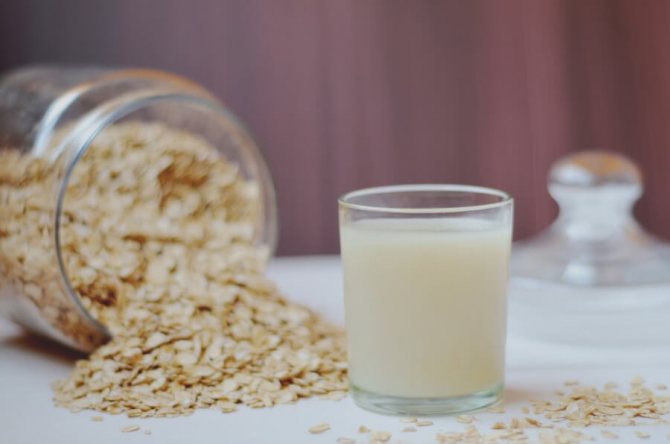
Oatmeal jelly is considered the most suitable for weight loss. Its calorie content is very easy to remember, since it is 100 kcal per 100 grams of product. Cereals help activate metabolic processes, improve digestion, normalize sugar levels, and remove dangerous waste and toxins from the body. This drink is considered absolutely harmless, so many nutritionists advise taking it constantly.
It is recommended to drink a glass of drink per day, approximately 30 minutes before meals. You need to drink it in small portions throughout the day, or you can replace one of your meals. The duration of therapy should be from 1 to 3 months. For the best effect, it is worth repeating this procedure every six months.
Oatmeal jelly recipe for weight loss:
Ingredients:
- a glass of oats;
- liter of water.
Cook for 4 hours, adding water if necessary. After this, cool slightly and beat the resulting broth with a blender. You can add dried fruits and honey to the mixture. The shelf life of this product is a week. The finished drink should be stored in the refrigerator and diluted with warm water before drinking.
Calorie content of jelly made from berries and starch. How many calories are in jelly?
Kissel is one of the Russian traditional dishes, the history of which dates back centuries. The high nutritional value and calorie content of this drink is explained by the presence of starch in it. All the beneficial properties of the components used for its preparation are fully preserved.
Doctors recommend that people with gastrointestinal ulcers, gastritis and increased secretion of gastric juice eat jelly. It is also recommended to drink them after eating spicy food that irritates the mucous membrane, since thanks to the viscous structure of the jelly, it envelops the walls of the stomach, protecting them from damage, and generally improves its functioning.
Kissel is a dish that will give you good health and joy!
Calorie content of oatmeal jelly
Oatmeal jelly, known back in the days of Ancient Rus', is considered the most healthy. It contains , which accelerates the elimination of harmful and toxic substances from the body, activates metabolic processes, and improves digestion.
If you regularly consume oatmeal jelly, you will not be at risk of developing a disease such as dysbacteriosis. Its viscous consistency envelops the walls of the stomach and has a healing effect. Oatmeal jelly is rich in minerals and trace elements, vitamins and amino acids.
It has a beneficial effect on human immunity, and the calorie content of jelly per 100 grams is 100 kcal.
Calorie content of milk jelly
It is very useful to include milk jelly in the diet of young children, because its benefits are obvious. Milk itself is a storehouse of useful substances, and the jelly made from it, with its viscous structure, is good for the stomach.
It envelops the mucous membrane, improves gastric motility and relieves pain. The calorie content of jelly per 100 grams varies depending on the milk used for its preparation.
Thus, the calorie content of jelly made from skim milk is 79 kcal, and from whole milk – 117 kcal.
Calorie content of berry jelly
Berry jelly, in addition to its pleasant aroma and taste, has beneficial and nutritional properties. It is prepared on the basis of various berries and potato starch.
The drink often turns out sweet, but its calorie content is not so high. It can be used by almost everyone, including small children.
The calorie content of berry jelly, depending on the composition, ranges from 54-59 kcal per 100 grams.
Kissel has long been valued for its pleasant taste and beneficial qualities. And today it remains a fairly popular drink among domestic consumers. It is usually made from starch or grains (such as rye or oats).
Grain jelly is an old Russian dish that was consumed with milk, butter or broth.
For modern people, jelly is a fruit and berry drink or dessert that you can prepare at home yourself from scratch or using a special preparation purchased in a store.
Many people are concerned about the question of whether this sweet treat can be consumed by those who are watching their figure or are on a diet. One of the most important questions for them is how many kilocalories are contained in such a drink.
Composition and nutritional value
Typically, jelly consists of a thickening component and fruit. Starch most often plays the role of the first. Both dried and fresh fruits or berries can be used as the latter. For example, it could be cherries, cranberries, strawberries, etc.
The calorie content of the finished product per 100 grams depends on the components that make up the drink. Thus, the fewest calories are in jelly made from cranberries, cherries or currants - from 150 to 200 kcal in 1 glass. Milk jelly is considered the most high-calorie - 100 kcal per 100 grams.
Let's take a closer look at the content of proteins, fats and carbohydrates (BJC) in the dessert. It is believed that jelly contains no proteins or fats (with the exception of milk and flax versions). However, the product contains a large amount of carbohydrates. For example, berry jelly (per 100 grams) contains about 20 grams of carbohydrates, currant jelly - 15 grams, cranberry jelly - 13 grams, cherry jelly - 11 grams.
If you prefer to drink jelly made from concentrate (usually sold in a pack), then know that the dry product contains 87 grams of carbohydrates per 100 grams of powder.
If you prepare jelly yourself at home, it is better to avoid adding sugar to the dessert - this product will significantly increase the calorie content.
Calorie content of cherry jelly per 100 grams
The calorie content of cherry jelly per 100 grams is 68 kcal. In 100 g of drink:
- 0.3 g protein;
- 0.22 g fat;
- 16.5 g carbohydrates.
To prepare you need:
- thoroughly rinse and remove stems and seeds from 0.4 kg of cherries;
- Pour 0.6 liters of water into a saucepan, boil the water and pour peeled cherries and 4 tablespoons of sugar into it;
- Boil the cherry mixture over medium heat until rich in color;
- pour 2 tablespoons of potato starch into a quarter glass of water, mix everything so that there are no lumps left;
- pour the dissolved starch into the jelly, remembering to stir constantly;
- cook jelly until boiling.
What are the benefits of jelly for weight loss?
Of course, the point of using jelly for weight loss is not to replace all dishes and meals with it. Kissel should be included in the diet in order to improve the functioning of the intestines and help it cope with the load that falls on it during dietary restrictions.
Firstly, the calorie content of jelly is low, which means that a dessert or snack will not only be pleasant, but also light
. Secondly, jelly enhances intestinal motility, helping it more effectively remove toxins and waste.
A fully functioning intestine digests food more efficiently, which reduces the likelihood of congestion in the intestines, and nutrients are consumed by the body rather than being stored in reserve.
Finally, the thick drink softens the manifestations of gastrointestinal diseases.
Oatmeal jelly for weight loss
Although berry jelly is rightfully considered the most delicious, aromatic and desirable, you will have to give it up during the diet due to its high sugar content.
The most acceptable type of jelly for weight loss is oatmeal. The most popular recipe for this drink is called “jelly for a flat stomach,” because it is believed that it cleanses the body and intestines so effectively that the stomach shrinks within one day after its use.
The basis of this jelly is oat flakes, and the effect is enhanced by prunes and raw beets. Making jelly for a flat stomach is easy
: pour two liters of boiling water into a cup of prunes, the same amount of oatmeal and a handful of grated beets. The resulting cocktail must be simmered over low heat for a quarter of an hour.
During this time, the broth will change consistency and turn into a viscous jelly-like drink. The resulting jelly should be strained, removing excess liquid, and then drink the maximum possible amount two hours before bedtime. The number of calories in this type of jelly does not exceed 100 kcal per 100 grams of product.
The grounds of the drink should be crushed and taken in the morning as breakfast. All components of this jelly serve one purpose: to improve digestion by eliminating blockages and toxic substances.
A fasting day, the diet of which includes only oatmeal jelly for weight loss, will cleanse the body well, give lightness, and will not be spoiled by the presence of a constant feeling of hunger.
Otherwise, oatmeal jelly for weight loss is recommended for morning consumption
: it will help the intestines wake up, satiate for a long time, supply the body with amino acids, vitamins, and enrich it with fiber necessary for the healthy functioning of the gastrointestinal tract.
This jelly is also very effective for constipation, but you should prepare it yourself and be sure to eat it fresh.
There are many other recipes for oatmeal jelly for weight loss. So, for example, you can add a glass of kefir to 100 grams of oatmeal, place it in an airtight container and leave for 24 hours. Flakes that have not undergone heat treatment retain much more beneficial properties and components.
